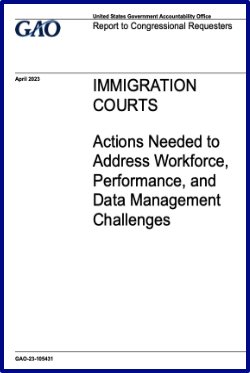By The American Immigration Council
The United States has broad authority to detain certain categories of immigrants, migrants, and others seeking humanitarian protection as their proceedings wind their way through the immigration legal system. This detention is “civil” by definition (as opposed to criminal), meaning that immigration detention should not be punitive in nature. Despite this technical legal distinction, most of the immigration detention infrastructure is indistinguishable from the criminal detention context, in some instances using the same facilities and private corporations to operate detention centers and jails.
Immigration and Customs Enforcement (ICE) states that the purpose of immigration detention is twofold: 1) to protect the wider community from those noncitizens who may pose a safety risk; and 2) to ensure that the individual will comply with any immigration proceedings (including removal). For the last two decades, there has been increasing interest in the United States and abroad to create and expand alternatives to detention for noncitizens who would otherwise be sent to immigration detention centers. This is due to an increasing understanding that detention is fundamentally harmful and inhumane—especially to immigrants of color— that there are alternatives that can achieve similar objectives to those the government is pursuing, and that there has been very little meaningful reform of immigration detention itself. For example, the current standards that govern the conditions of most immigrant detention centers, the Performance-Based National Detention Standards, were explicitly based on criminal pre-trial detention and were written in 2011, with minor updates made in 2016 and no updates in the years since then. Study after study has shown that alternatives to detention programs are generally more humane and more cost-effective than immigration detention.
Washington, DC: American Immigration Council, 2022. 9p.










